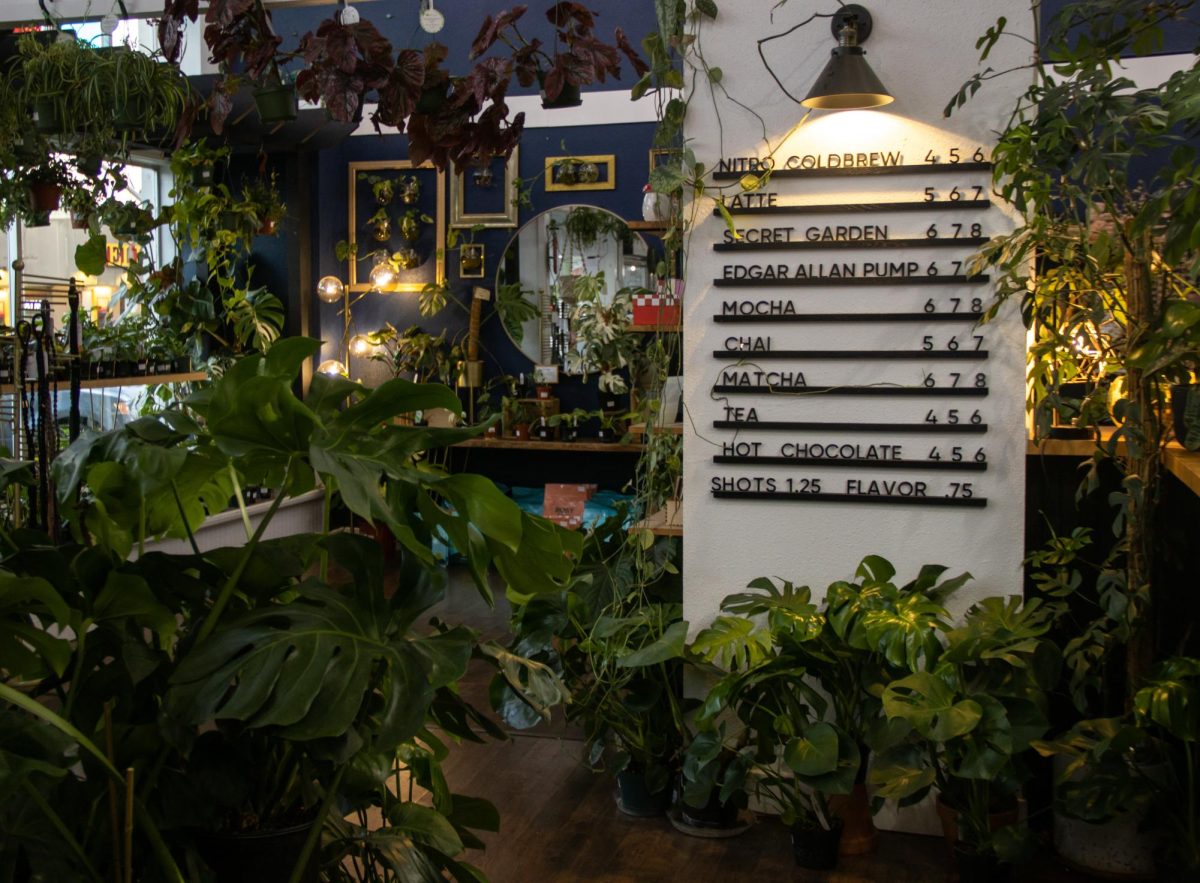Ideas about adding a gender-inclusive restroom in the School of Writing, Literature and Film’s Moreland Hall have been circulating for a couple of years, but solutions are still being explored.
Some believe that Moreland’s restroom configuration – including one women’s restroom, two men’s restrooms, and a single-user gender-inclusive restroom – falls short of meeting the needs of all students. Last year, the SWLF Diversity, Equity, and Inclusion Committee evaluated different options for implementing a multi-stall gender-inclusive restroom in Moreland.
Originally called the Forestry Building, OSU’s Moreland Hall was built in 1917 and retains most of its original features according to OSU’s Special Collections and Archives Research Center – where historical university materials are conserved.
Now home to the School of Writing, Literature, and Film, Moreland has only undergone one major remodel in the ‘70s when it was converted to be used by the English Department.
Creative Writing MFA student Elliot Laurence is a transgender man and member of the SWLF DEI committee.
Laurence played a significant role in dissecting the options for establishing a gender-inclusive restroom in Moreland while on the DEI committee last year. The committee submitted action items to the SWLF administration in Spring 2024, which included proposed solutions for the project.
“In Spring term 2024, SWLF’s DEI committee delivered two pages of possible action items and goals to pursue over the next several years,” said SWLF Director Tim Jenson in an email. “Creating additional all-inclusive bathrooms and exploring signage options were two of twenty possible action items.”
Laurence shared that many of his classmates and himself prefer to use a gender-inclusive restroom.
“During our breaks, we do line up and fight over the (single-user) gender-inclusive bathroom, which shouldn’t be happening, especially because… people need it for accessibility reasons,” Laurence said. He also attested that the single-user tends to go out of order.
When the single-user is unavailable, transgender, nonbinary and gender-nonconforming students have to consider other options.
“I know that there’s people who identify as non-binary and don’t feel like they belong in the men’s or women’s restroom. When they’re forced to choose one – to walk up and down the stairs and have to figure that out – it’s just another stressor for your day,” said Laurence.
Sarah Perrault, professor of rhetoric and writing, has an office in Moreland Hall. “Let’s say the one (single-user) downstairs is occupied, and this student has a class starting in ten minutes. Their choices are to walk to another building, be late to class, or don’t go to the bathroom, which is not only psychologically difficult but also physically harmful,” she said.
Perrault said she knows students who have walked from Moreland to the Memorial Union or even Strand Agricultural Hall to find an available gender-inclusive restroom.
“When I was on the military base when I was transitioned, I would have to drive to a different building to use the restroom,” Laurence said. “So I don’t think we should be having this problem here at the College of Liberal Arts.”
Students and staff have raised additional complaints about the layout of the women’s restroom.
Emile Harris, a third-year English major, described the women’s restroom as uncomfortable and small. “I think it might be the worst bathroom that I’ve been to on campus,” she said.
“Not only do women only have one (restroom), but we have the one, where if somebody’s coming out (of a stall), you can’t get in,” said Perrault.
Each men’s restroom is noticeably larger than the women’s, including a covetable open floor plan. In all, the two men’s restrooms have six stalls, four sinks, and four urinals, while the women’s restroom has three stalls and two sinks.
Besides their size, the men’s and women’s restrooms share features like tile floors and wood stall doors with vintage metal locks. Though their stalls retain a striking antique charm, they also have an antique size, being noticeably smaller than average.
“The stalls are so small that you actually have to squeeze in sideways next to the toilet to even be able to get into the stall and get the door closed,” Perrault said.
A prominent roadblock to implementing an inclusive restroom in Moreland is the potential for renovation. “To meet the guidelines for Oregon State’s “all-user restrooms,” there would be a lot of construction that would have to happen,” Laurence said.
The initiative in Moreland Hall reflects the university’s broader effort to expand inclusive restrooms across campus. The “All-User Toilet Room” Task Force combines efforts from multiple university departments to work towards implementing all-user restrooms across campus, according to University Architect Libby Ramirez.
The task force decided for signage to read “all-user restroom,” along with a series of standards for these restrooms. One of these requirements includes floor-to-ceiling stall doors, which would necessitate renovations in existing buildings like Moreland.
Ramirez oversees maintenance and design standards for the interior and exterior of campus buildings. She explained that the interior of historic buildings like Moreland are less regulated than the exterior, but present unique renovation challenges.
“You start one thing, and then it’s a domino. You’ll put in a new toilet, and then you realize the plumbing is falling apart… and it can just continue to snowball,” Ramirez said.
Laurence and fellow SWLF DEI committee members thought taking a similar approach to the Valley Library would be the quickest solution.
The Valley Library converted its main floor restrooms into two gender-inclusive restrooms in 2021. They made modifications to minimize the gap between stalls and the signs were changed to read, “Gender-Inclusive Restroom.”
“The work that was done in the library was done on their own,” Ramirez said.
Using the library’s method would allow SWLF to sidestep costly and time-consuming renovations.
“I would like all of our signs to be inclusive, but if we can just change one really quick that would make a world of difference for people,” Laurence said.
“We are looking at a range of ideas, from updating signage to constructing additional, all-inclusive bathrooms,” Jensen said. “Most options require collaboration with University Facilities, Infrastructure, and Operations, who are responsible for the design, construction, and maintenance of safe, sustainable, and efficient bathroom facilities.”
Jensen said that SWLF is in active communication with UFIO and assured the DEI committee will continue to build upon last year’s progress.
Laurence believes that efforts have slowed at the administrative level, with the Graduate Teaching Assistant strike further slowing down processes. He is rejoining the committee this year and hopes to continue to advocate for an inclusive restroom for Moreland.
OSU provides a map of gender-inclusive restrooms on campus and a list of resources for transgender students.














